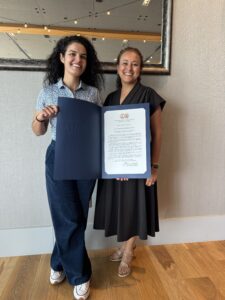April 2025
At the Center for Nonprofit Excellence – Virginia, we are proud to stand alongside you as champions and advocates for the nonprofit sector. We recognize that this year has brought an overwhelming amount of change and uncertainty. Information is coming at us quickly, and many of these shifts—particularly in government funding—have been detrimental to nonprofits’ ability to meet urgent community needs, from child care and food security to affordable housing and mental health services.
As we work through this complex moment together, we encourage nonprofit leaders to prioritize open conversations with funders—local, state, and philanthropic—about how to strategize collaboratively and think differently in the face of significant funding deficits due to federal or state reductions. Now is the time to assess risks, adapt creatively, and lean on our collective strength to sustain our missions.
Federal Policy Developments
Courtesy of the National Council of Nonprofits (NCN)
Executive Orders: What Nonprofits Should Know
The NCN’s Executive Orders Affecting Charitable Nonprofits chart now includes a helpful “status” column that clarifies which executive actions are in effect, under legal challenge, or pending review.
Additional Resources:
Legal Spotlight: Woonasquatucket et al. v. USDA
In March 2025, NCN and the Woonasquatucket River Watershed Council, among other plaintiffs, filed a lawsuit against the U.S. Department of Agriculture. The case challenges new federal grant policies that restrict nonprofit access to public funds without clear justification or due process.
Medicaid Cuts & Federal Budget Threats
From The Commonwealth Institute
The U.S. Senate is advancing a budget framework that could lead to deep cuts to Medicaid, potentially affecting hundreds of thousands in Virginia.
A report by CBPP estimates $880 billion in proposed cuts would lead to:
- Reduced benefits
- Lower enrollment
- Decreased provider payments
What’s at Risk for Virginia:
- Over 874,000 Virginians may lose coverage due to harsh new work reporting requirements.
- A per capita cap could shift $16–27 billion in costs to Virginia over 10 years.
- Lowering the federal Medicaid match from 90% to 51% would cost $2.28 billion in 2025 alone.
- Vital services—like addiction treatment, foster care screenings, and disability supports—would be impacted.
“We have to fight for Medicaid. We have to fight for SNAP.” — Rep. Suhas Subramanyam (VA-10)
“Over 600,000 working Virginians could be thrown off Medicaid rolls.” — Del. Rip Sullivan (D-Fairfax)
Action Needed: Contact your members of Congress. Advocate for Medicaid and SNAP.
Virginia Budget & Policy Updates
Via The Commonwealth Institute & Virginia Funders Network
General Assembly Reconvened: April 2
Lawmakers reconvened and rejected most of Governor Youngkin’s proposed amendments to the 2025–26 budget. This includes cuts to education and Medicaid planning.
What Was Protected:
- Lifting the arbitrary cap on funding for school support staff
- Increasing the refundable EITC for low-income working families
- Rejected: Medicaid contingency planning tied to federal cuts
- Rejected: Expanded private school voucher program
Budget Comparison Tool
TCI Budget Response
Virginia Budget Process Visual
What You Can Do
- Talk with your funders. Start honest, creative conversations.
- Scenario plan with your board and leadership.
- Share tools and resources with your team.
- Advocate. Call your elected officials. Join coalitions.
- Center well-being. Caring for your self and your team is part of resilience.
You’re Not Alone
The challenges are real—and so is our shared commitment to community. If you’re feeling overwhelmed or unsure how to respond to these changes, reach out. CNE-Virginia is here to help—whether it’s breaking down policy, identifying action steps, or just brainstorming next moves.
Together, we will keep showing up for the people and places that depend on us.
Mariane Asad Doyle
Executive Director, CNE

